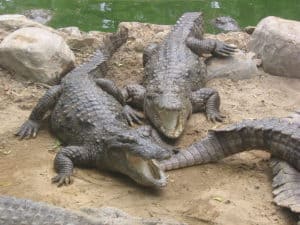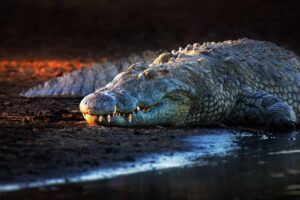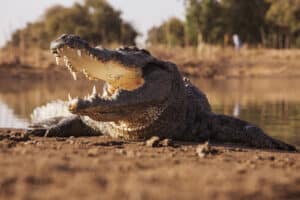The lappet-faced vulture is the biggest vulture in Africa. With a wingspan of nearly nine feet wide, many other birds avoid coming close to a lappet-faced vulture. The skin folds known as lappets on both sides of its neck are whence it gets its name.
When defending the carcass that it is eating, these strong birds have the capacity to intimidate numerous other creatures, often scaring them away. A video showcasing a flock of these birds eating on a dead hippo is going viral.
Watch the Unbelievable Footage by Clicking Below!
With comments like “This is amazing to watch. I’ve never seen so many vultures. The sounds of the wildlife are also amazing,” this video is a must-see. Although grotesque, animals eating the dead carcass of another animal is nothing unusual in the wild.
As the birds continue to eat, one of them hops directly into the water. When it’s about to fly back to shore, a crocodile appears out of nowhere, quickly snapping its jaws around the bird. Within seconds, the bird is underwater.
How Do Crocodiles Hunt?
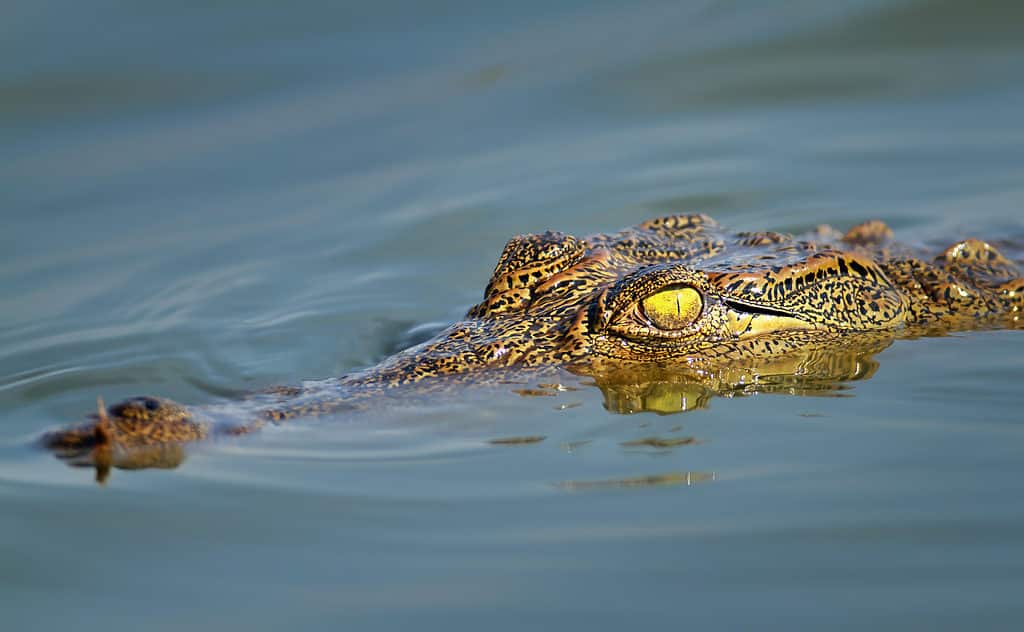
Crocodiles can camouflage into the water.
©Mari Swanepoel/Shutterstock.com
Crocodiles follow their prey covertly while hunting from the water. Numerous crocodiles will wait for their target to drink or bathe near the edge of the water. That’s exactly what the crocodile was doing in the video we have for you below.
A crocodile will bring its victim into the water after it has captured it to drown it. In an interesting turn of events, crocodiles happen to be closely related to birds! As you can see in the footage, crocs do eat birds, although they likely would’ve preferred the hippo when it was alive.
Is It Normal For Crocodiles To Eat Birds?
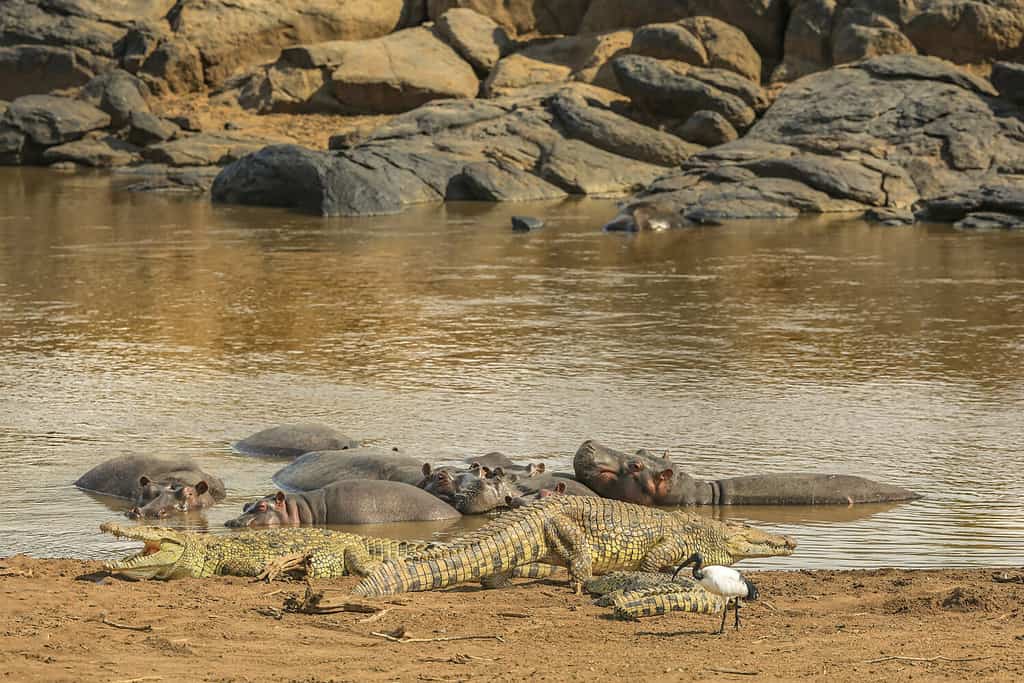
Crocodiles are opportunistic feeders and will eat what they can.
©OlgaPetrusha/Shutterstock.com
These reptiles possess incredibly flexible diets as they are opportunistic feeders. Bigger crocodiles eat larger mammals and birds, yet they also include fish and snails in their meals. When conditions are tough, they might even feed on dead animals.
In truth, crocodiles will devour nearly anything that crosses their path.
Lappet Vultures Adaptations
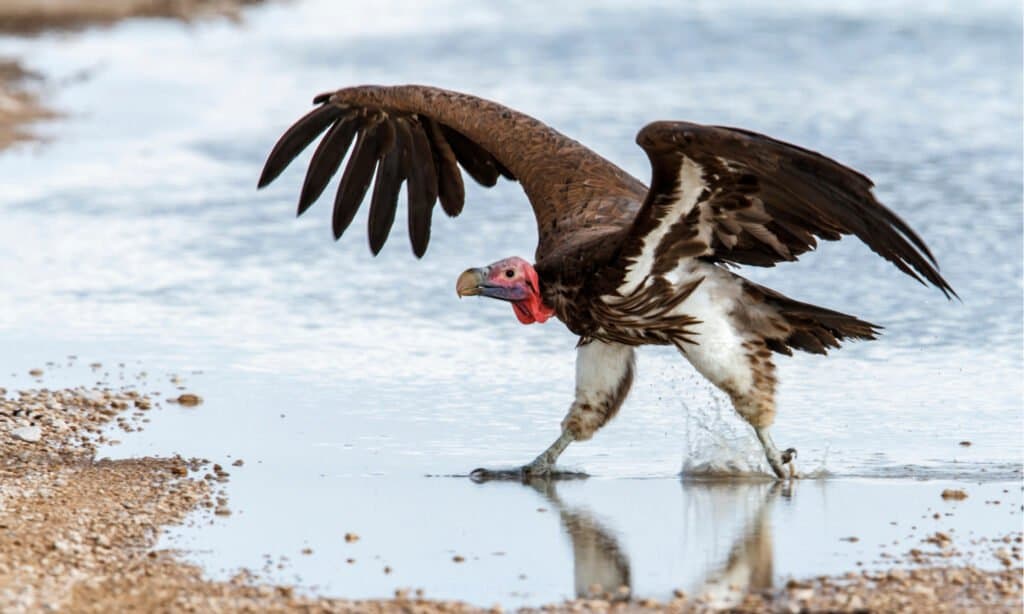
The lappet-faced vulture has a large bill that is designed for ripping into the flesh of rotten meat.
©Henk Bogaard/Shutterstock.com
It may surprise you to learn that the Lappet-Faced Vulture’s bald head is one of its most significant adaptations!
The explanation for this evolutionary change is somewhat gory, but in essence, the bald head is a result of the likelihood that blood splashes from victims would adhere to the feathers and making it impossible to maintain cleanliness.
Furthermore, the Lappet-Faced Vulture has a huge bill that is an adaptation that makes it easier for it to rip into corpses, particularly with its apparent and pointed hook at the end. Lappet-Faced Vultures have an outstanding vision to enable them to locate carcasses as well as live animals from a distance.
They also have rough tongues that are strong to enable them to manipulate bits of flesh into their bills. In their natural environment, vultures are devoid of a lot of predators. Although hawks might prey on other vultures, this is uncommon given the Lappet-Faced Vulture’s larger size and strength.
The Lappet-Faced Vulture can be harmed by huge wild cats and snakes. Crocodiles are unquestionably predators as well. Watch the video down below!
How Large Do Crocodiles Get?
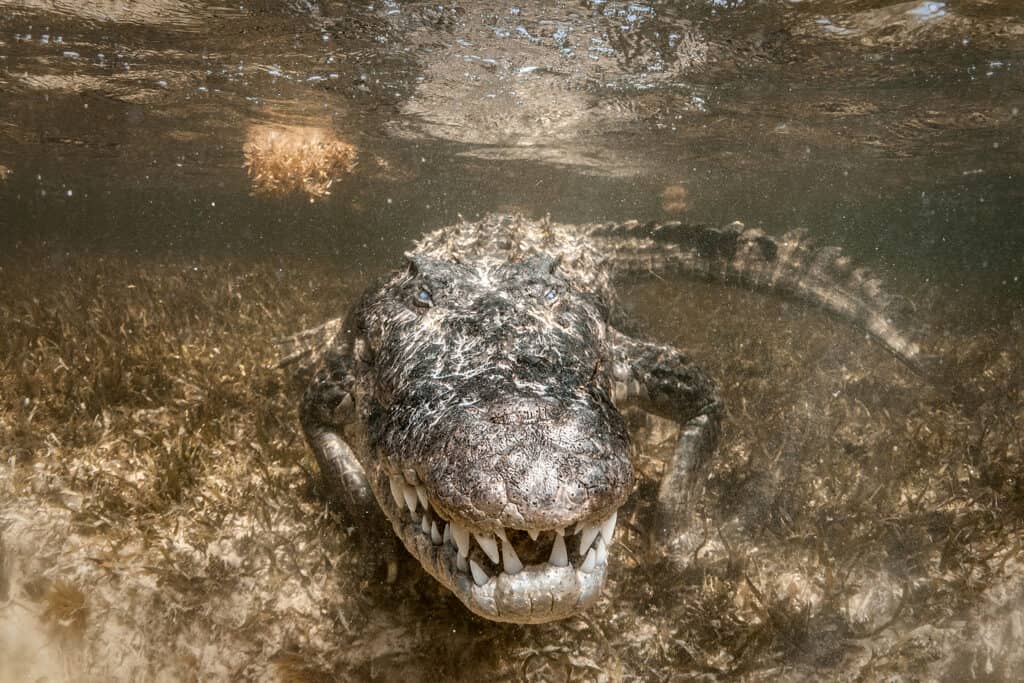
Saltwater crocs have been known to reach extreme sizes of 23 feet long!
©Alexander Machulskiy/Shutterstock.com
Male saltwater crocodiles have been documented to reach sizes of a staggering 23 feet in length and weigh around 2,205 pounds. In contrast, females are notably smaller, attaining lengths of about 10 feet and weights of 330 pounds.
The world’s biggest crocodile measures 22 feet in length and can tip the scales at a whopping 2,200 pounds! The runner-up in size boasts a length of 20 feet three inches from its nose to its tail.
On average, crocodiles typically reach lengths ranging from 10 to 16 feet.
The photo featured at the top of this post is © Henk Bogaard/Shutterstock.com
Thank you for reading! Have some feedback for us? Contact the AZ Animals editorial team.




